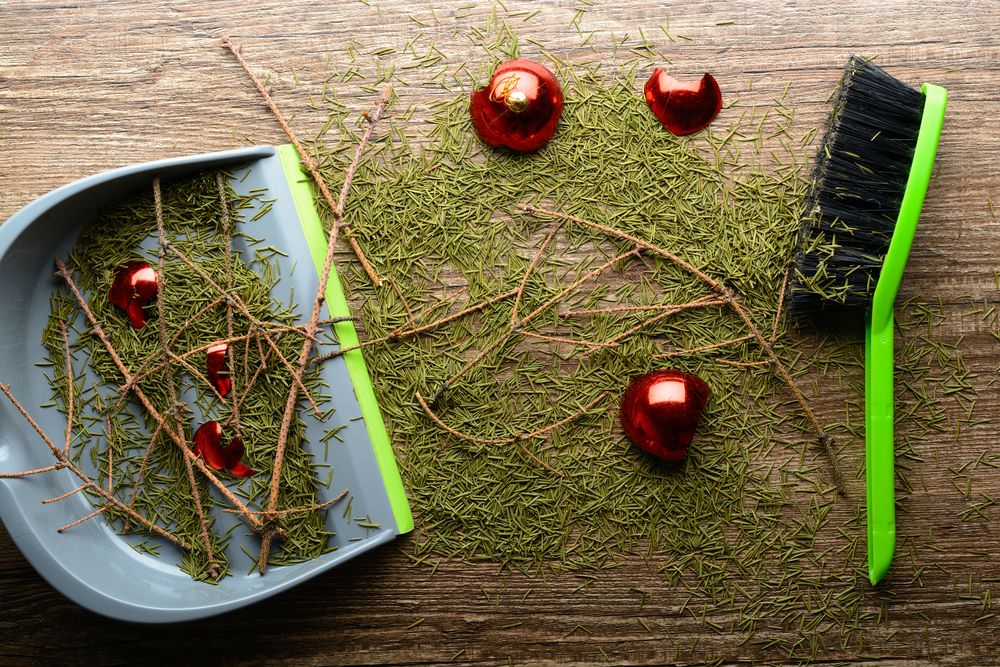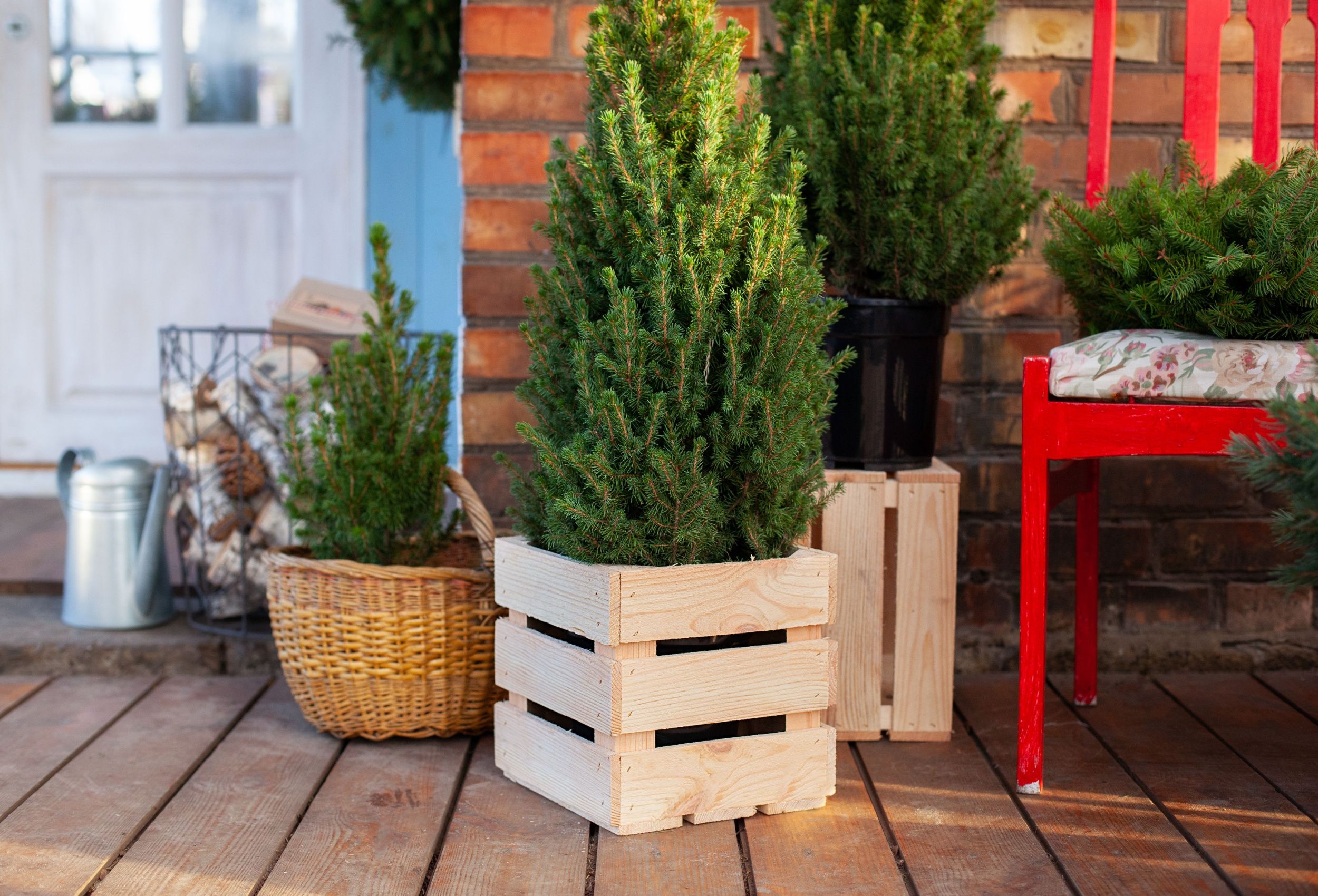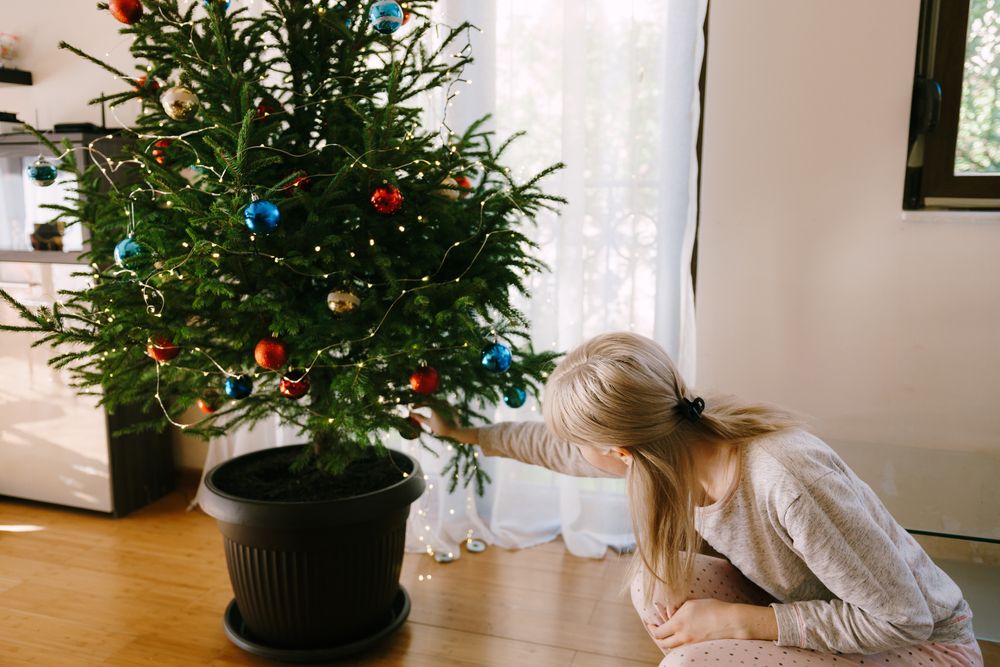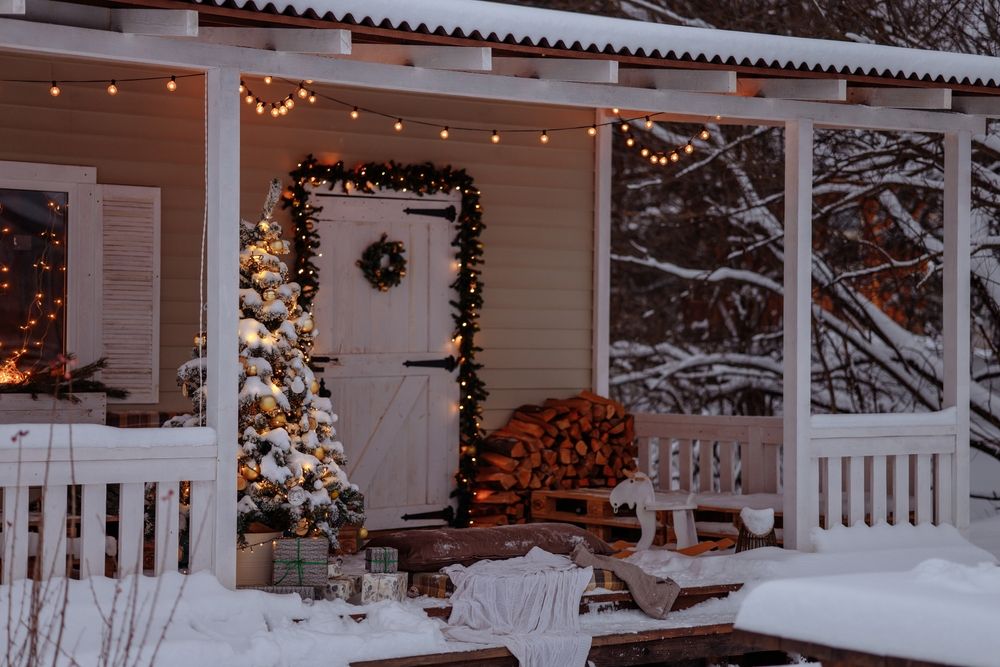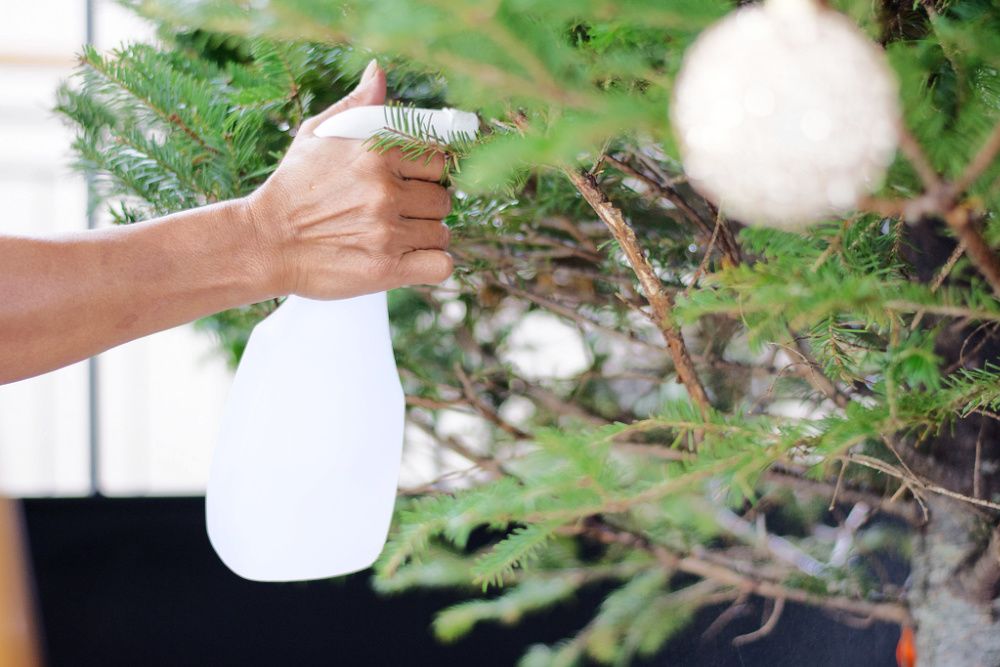A potted Christmas tree is the perfect option if you want a sustainable, low-maintenance, and traditional piece of Christmas décor. They don't require much in terms of care, only needing water and cool temperatures. Plus, you can replant them in your yard and reuse them for years to come.
Like all potted plants, you may run into a few issues. While dropping needles is natural, and you should keep a broom nearby, too many needles lost and discolored foliage points to a bigger problem. So, why is your tree dying? And how can you bring it back to life? Learn about the simple changes you need to make to revive a dying potted Christmas tree.
Why Your Tree is Dying
Image credits: Ramil Gibadullin via Shutterstock
While you want your Christmas tree to last til the big day, it should also survive through the winter and the rest of the year so you can use it again! Unfortunately, too much time indoors can be critical to the health of many evergreen trees. Insufficient or overwatering can also result in needle loss and a color change.
Tools You'll Need
Image credits: stock_studio via Shutterstock
If your tree is struggling, there are a few tools you'll need to compile.
- Broom and dustpan
- Watering can
- Pot with drainage
- Pruning shears
- Well-draining soil
- Biodegradable burlap
- Twine
- Anti-desiccant spray
How to Revive a Dying Potted Christmas Tree
Reviving a dying potted Christmas tree means adjusting your care routine. Whether the tree needs a change when it comes to watering or it's time to bring it back outside, there's something you can do to bring it back to life!
Revamp Your Watering Routine
Image credits: nadtochiy via Shutterstock
It's no surprise that trees need water, but how often should you water these evergreen beauties? As a general rule of thumb, water the plant as often as necessary to keep the root ball or burlap moist, but avoid making it soggy. If the tree is dehydrated, you'll notice lots of needle loss since they dry out.
On the other hand, if the tree is suffering from overwatering, check for signs of root rot, such as soaked soil, browning needles, and dead branches. If you spot these signs, inspect the root ball and trim away any dead roots using a clean and sharp pair of pruning shears.
Then, replant in fresh, well-draining soil and wrap the root ball in biodegradable burlap, using twine to keep it in place. Plant in a pot with a drainage hole and resume regular care.
Bring it Outdoors
Image credits: Kaplitskaia Love via Shutterstock
Keep live potted trees indoors for a maximum of one week. While this is perfect if you prefer to have décor up for a shorter time, you can still decorate your home for the holidays! Also, you can place the tree on your porch, making it easier to bring indoors. And if you choose to decorate it outside, it adds a very festive look to your front door!
When indoors, keep your tree away from any heat sources, such as vents and fireplaces, which can dry it out more quickly. Keeping it in a cooler spot near a window is your best shot at keeping the tree happy and healthy. If you brought the tree indoors and it is declining, you might need to adjust the temperatures in your home or bring it back outdoors.
Pro Tip: If you want to keep a potted Christmas tree in the house for longer than a week, opt for a Norfolk Island pine. They are commonly kept as houseplants and thrive in warmer temperatures.
Replanting
Image credits: By CreativeI via Canva
If you've decided it's time to bring the tree back outdoors, keep it in your garage or basement for a few days so it can adjust to the temperature shift. If the ground isn't soft enough for planting, mulch around the base of the tree in its pot and keep it in a sheltered location. Continue to water every few weeks until spring.
Once the weather warms up, it's time to transplant! Remove any twine around the root ball and either slice the burlap every six inches or roll it down to the bottom of the root ball to allow new roots to grow. Plant the tree in the ground, using a stake to hold it upright while it develops new roots, and top it with mulch to maintain moisture levels and insulate the roots.
How often you water depends on the temperatures and rainfall in your area, but keep the ground moist to help the tree develop new roots.
Spray With Anti-Desiccant
Image credits: TANAGRITYEvia Shutterstock
While anti-desiccant isn't the way to revive a tree, it is an excellent preventative measure. This spray is a protective coating for foliage to avoid moisture loss.
Once you've adjusted your watering routine and provided your trees with the proper temperatures, this spray will only help them survive.
Keep it Fresh
Temperature and watering routines have a massive effect on the health of your potted Christmas tree. If you're noticing a decline in the plant's health, take immediate action, addressing the warmth of your home and how heavy-handed you're being with the watering can!
Do you have any tips for reviving a dying potted Christmas tree? Share in the comments below!


